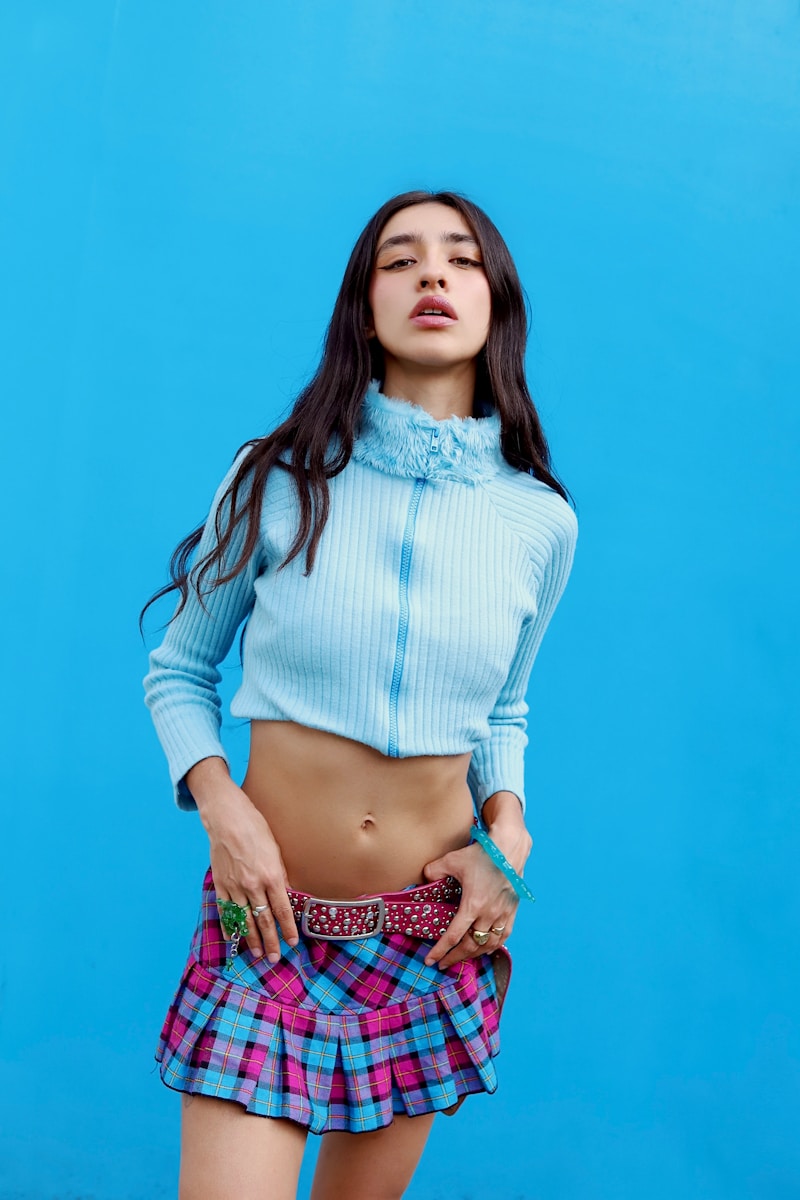The turn of the millennium was a time of rapid technological advances, digital innovation, and cultural shifts. Yet, it wasn’t just the launch of new technologies or the excitement of entering the 21st century that left a lasting impact on society. The fashion of the late 1990s and early 2000s—often referred to as “Y2K fashion”—was a visual representation of the optimism, chaos, and curiosity that defined the era. Today, we’re seeing a resurgence of Y2K-inspired styles in pop culture, social media, and mainstream fashion, as younger generations gravitate toward the bold, eclectic looks that were once considered emblematic of a brief moment in history. But why can’t we let Y2K fashion go? What makes this particular trend so timeless, so captivating, and so deeply ingrained in our cultural consciousness? The answer lies in nostalgia, cultural significance, and the cyclical nature of fashion itself.
- The Birth of Y2K Fashion: A Snapshot of the Early 2000s
Y2K fashion emerged at the intersection of the internet boom and the dawn of the digital age. The turn of the millennium was a time of rapid technological change, with the internet becoming more accessible and new tech gadgets like the first iPods, flip phones, and early mobile phones emerging as status symbols. The fashion of this era mirrored the technological optimism and a sense of embracing the future, but also reflected the anxieties of the unknown.
The style was characterized by an eclectic blend of futuristic aesthetics and nostalgia for past decades, often pulling inspiration from 1980s neon colors, ’90s grunge, and early digital culture. Key elements included metallic fabrics, oversized cargo pants, low-rise jeans, tiny sunglasses, logo-centric designs, and an overall sense of excess. Think of pop stars like Britney Spears and Christina Aguilera rocking glittery outfits and crop tops, or the rise of athleisure as a dominant fashion trend, with brands like Juicy Couture and Abercrombie & Fitch dominating the scene. Iconic accessories like trucker hats, belly chains, and butterfly clips became part of everyday wear, while the influence of celebrities and MTV culture was palpable.
This fusion of styles created a look that was playful, rebellious, and unapologetically bold, reflecting the excitement and uncertainty of the time. But despite its initial popularity, Y2K fashion eventually faded as new trends emerged, giving way to minimalism and a more polished, sophisticated aesthetic in the 2010s. However, the spirit of Y2K fashion never truly disappeared—it simply lingered beneath the surface, waiting for a time to make a comeback.
- Nostalgia: The Driving Force Behind the Y2K Revival
One of the most compelling reasons why Y2K fashion refuses to die is nostalgia. The early 2000s was a formative time for many people, especially millennials who were coming of age during this period. For those who lived through the Y2K era, the return of the fashion from that time feels like revisiting a part of their past. The iconic pieces, the colorful trends, and the playful, carefree vibe all serve as a reminder of simpler times before the rise of social media, constant connectivity, and the overwhelming speed of modern life.
The Y2K revival is especially prominent on platforms like TikTok and Instagram, where Gen Z is embracing the fashion choices of their predecessors. It’s not just about replicating the look, but about reinterpreting it with a modern twist. This blend of old and new is what makes the Y2K aesthetic so appealing: it taps into a collective sense of cultural memory while simultaneously offering a form of escapism. For younger generations, the Y2K aesthetic represents a time they didn’t live through, but one that still feels nostalgic through their favorite pop culture references, influencers, and the visual cues they encounter online.
Nostalgia is a powerful tool in fashion because it provides comfort, security, and a sense of identity. The Y2K aesthetic allows people to reconnect with a time when things felt more straightforward—before the complexities of the digital age took over. This is why fashion cycles often repeat: there’s a comfort in revisiting styles and trends from the past, whether it’s a return to flared jeans or the return of early 2000s streetwear.
- Cultural Impact: Y2K Fashion as a Reflection of Its Time
Y2K fashion is also a reflection of the cultural and societal shifts that occurred at the turn of the century. In the late 1990s and early 2000s, there was a sense of both optimism and anxiety. On one hand, people were excited about the technological advancements that were transforming everyday life. The internet was changing how we communicated, the rise of personal computers and mobile phones made the world feel smaller, and a whole new digital culture was emerging.
On the other hand, the Y2K bug—the fear that computer systems would malfunction when the date changed from 1999 to 2000—loomed large, creating a sense of unease about the future. This combination of technological excitement and digital anxiety was expressed in fashion through a blend of futuristic elements and the need for security and comfort. The metallic fabrics, space-age aesthetics, and digital-inspired prints represented the fascination with technology, while the more casual, laid-back, and comfortable pieces reflected a desire for normalcy and ease.
The influence of pop culture, particularly the rise of reality TV, music videos, and teen movies, also played a huge role in shaping the fashion of the time. MTV was at its peak, and celebrities like Britney Spears, Paris Hilton, and Destiny’s Child became trendsetters whose styles were emulated by millions. Their bold fashion choices reflected the playful, experimental spirit of the Y2K era. As a result, the fashion of the time became closely intertwined with celebrity culture, and certain looks—such as low-rise jeans, baby tees, and statement accessories—became symbols of both style and status.
- The Influence of Social Media and Pop Culture
The resurgence of Y2K fashion in recent years can be largely attributed to the rise of social media, where trends spread quickly, and nostalgia for past decades is a commodity. Platforms like TikTok have become incubators for fashion trends, with young people actively reviving and reinterpreting styles from the early 2000s. Influencers and content creators often draw inspiration from the Y2K aesthetic, posting videos of themselves styling iconic pieces like butterfly clips, cargo pants, and denim mini skirts.
Additionally, the resurgence of Y2K fashion is fueled by the broader cultural interest in 2000s pop culture. From the popularity of early 2000s music (think of the rise of pop-punk and R&B throwbacks) to the renewed interest in old-school video games and movies from that era, the Y2K revival taps into a collective desire to relive the cultural moments that defined the early 2000s. Fashion, as a form of self-expression, allows people to participate in this nostalgia by wearing the same styles that were once seen in the media and on the streets.
Music videos, television shows, and movies from the Y2K era are also making a comeback. Classic teen movies like Mean Girls and Clueless, as well as the iconic fashion moments from Britney Spears’ music videos, continue to inspire a whole new generation. These films and videos not only showcase the fashion of the time but also capture the cultural zeitgeist, making them a significant influence on current trends.
- The Timelessness of Y2K Fashion
At its core, Y2K fashion is about freedom, self-expression, and experimentation. The bold use of colors, patterns, and textures reflects an era that was unafraid to embrace excess and playfulness. This fearless approach to fashion has given Y2K style a timeless appeal. The aesthetics of the era—glittery, metallic, and colorful—speak to the desire for fun and individuality that transcends time.
Moreover, the cyclical nature of fashion means that no trend ever truly disappears. The Y2K look, which was once viewed as overly flashy or kitschy, is now being embraced for its originality and confidence. Today’s fashionistas are taking the boldness of Y2K fashion and pairing it with more sustainable, modern materials, blending the old with the new in ways that make it feel fresh and relevant.
The adaptability of Y2K fashion also contributes to its longevity. While some trends, such as low-rise jeans, may come and go, others—like oversized silhouettes, crop tops, and statement accessories—remain timeless. These pieces have transcended generations and can be worn in a variety of ways, making them as relevant today as they were in the early 2000s.


